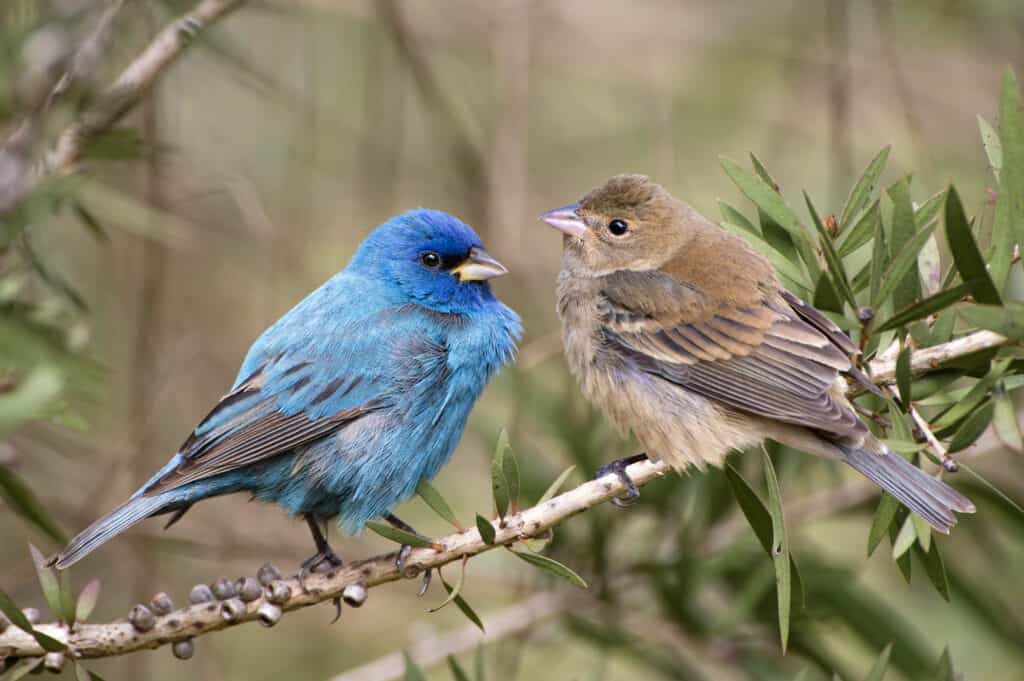
The post 8 Birds That Look Like Blue Jays (And How to Spot the Difference) appeared first on A-Z Animals.
Despite their colorful appearance, blue jays are actually in the family Corvidae, the same as crows and ravens. These birds are typically 9 to 12 inches long from beak to tail and weigh under 3.5 ounces. Their wingspans range up to 17 inches. Another characteristic of blue jays is their feathered crest on their heads that they raise or lower depending on their mood. And of course, they get their name from their brilliant blue coloring. Most have white chests with blue backs, blue caps, and black and blue striped patterns on the wings and tail. Experts believe that each blue jay has a slightly different pattern to help with identification between members of the same species.
Blue jays range west to east from Texas to Florida. They go as far north as parts of southern Canada. Their western limit is generally the Great Plains. Though blue jays are highly recognizable, several birds do a good job of resembling them. Keep reading to learn about some of the top blue jay copycats and how to tell the difference.
This post was updated on September 16, 2025 to clarify blue jay’s taxonomy and western range, California scrub jay markings, Steller’s jay spelling, and description of the pinyon jay.
1. Indigo Bunting

Both indigo buntings and blue jays are blue birds with black markings.
©Bonnie Taylor Barry/Shutterstock.com
This brilliant blue bird spends the winters in Central and South America, but comes north ranging from Texas to Florida, and as far north as Canada for their breeding season. They share most of their territory with blue jays. Both indigo buntings and blue jays are blue birds with some black feathers (males). However, that is where the similarities end.
Buntings are relatively small birds that are only up to 5.5 inches from head to tail. While both species have black markings, blue jays have a characteristic black “necklace” that delineates the head from the rest of the body. Buntings do not have this. They are all blue except for a little dark gray on the wings. Additionally, blue jays have white on their stomachs and legs. Buntings are vivid indigo throughout their whole bodies, with darker blue heads.
2. Mountain Bluebird
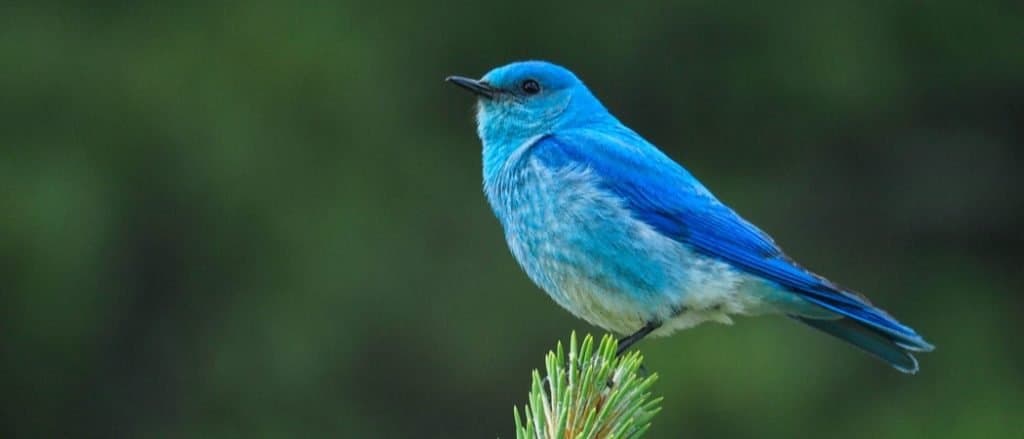
The beautiful mountain bluebird is smaller than the blue jay.
©MTKhaled mahmud/Shutterstock.com
This bird shares some characteristics with the blue jay, including its lighter underside and sky-blue back. Their habitats overlap a bit, though bluebirds are much more present in the Western United States. They spend their winters in Mexico and the southwestern United States before traveling north to Canada and Alaska to breed.
One way to distinguish them from the blue jay is by size. The mountain bluebird is smaller than the blue jay, only growing up to 7.8 inches long on the larger end. Additionally, mountain bluebirds do not have a crest of feathers on the head, nor do they have the black necklace marking. They also feature lighter shades of powder blue not found on the blue jay.
3. California Scrub Jay
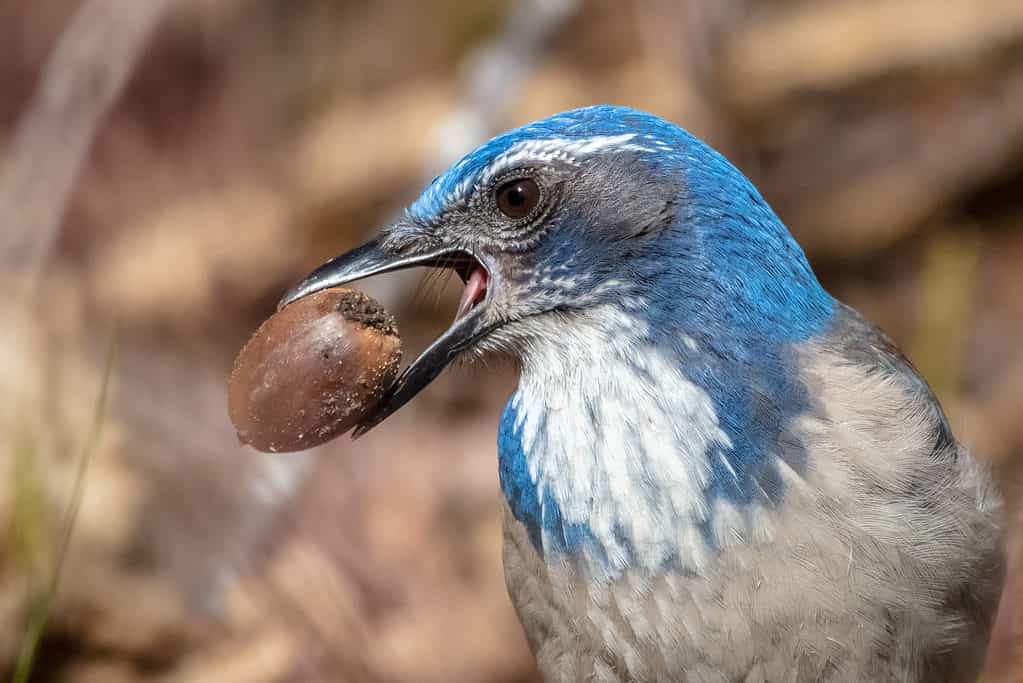
California scrub jays closely resemble blue jays.
©Pierre Leclerc/Shutterstock.com
The California scrub jay is a dead ringer for the blue jay. They are even in the same taxonomic family, but they are in different genera. One way to tell them apart is by habitat. As their name implies, California scrub jays are mostly found on the west coast of the United States, which is outside of the blue jay’s typical territory. However, during the summers, the two species may share a bit of territory in Washington and Oregon.
The scrub jay and blue jay are a similar size and color. So, how do you tell these very similar birds apart? There are a few subtle differences. The California scrub jay has patches of grey along with white on its stomach, while the blue jay has a necklace marking. The California scrub jay also lacks the characteristic blue jay crest. In terms of behavior, scrub jays tend to be more assertive and have even been known to take nuts out of people’s hands.
4. Florida Scrub Jay
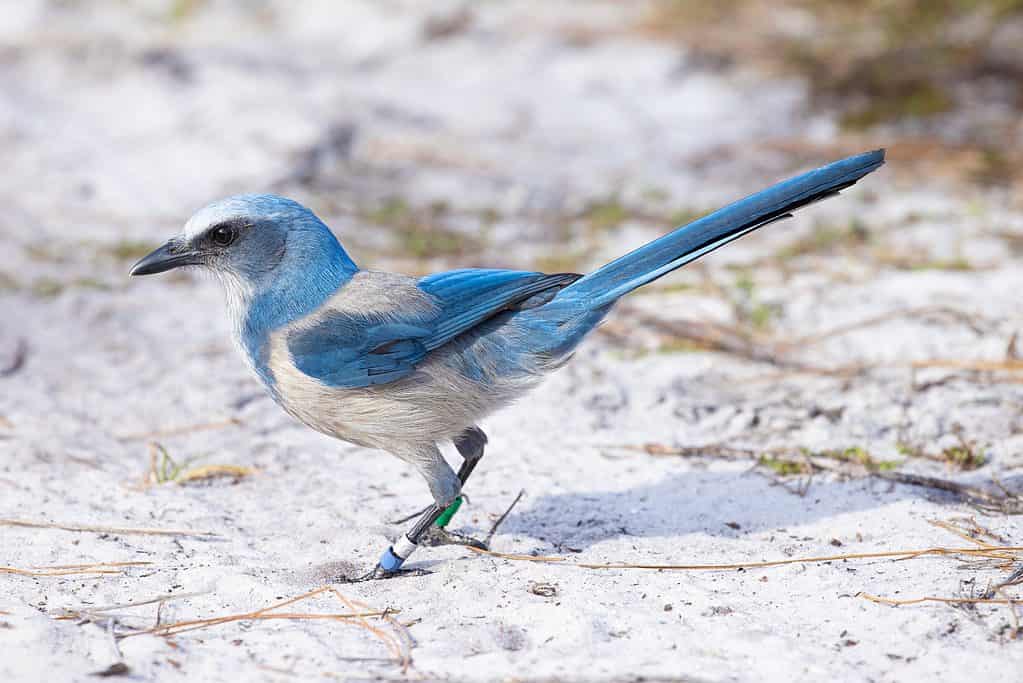
On the Florida scrub jay, the underside is grey, not white.
©Tommy Daynjer/Shutterstock.com
The Florida scrub jay is in the same family as the blue jay, so it makes sense that they look rather similar. As with the California scrub, this bird is again a similar length and coloring to the blue jay. They both have lovely long tails and lighter markings on the underside of their bodies. However, on the Florida scrub jay, the underside is grey, not white. They also lack the blue jay’s black necklace or significant black markings on their wings. As with the bunting, their feathers are a paler shade of blue. And maybe their most notable difference is their lack of crest. Another distinguishing clue is that the Florida scrub jay is only found in certain areas of Florida. If you’re not in The Sunshine State, you won’t spot a Florida scrub!
5. Steller’s Jay
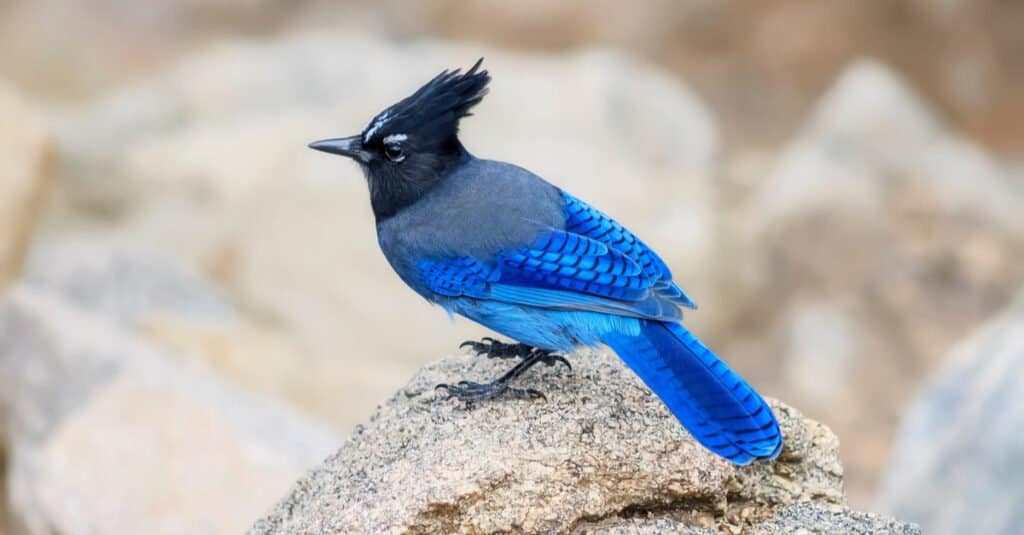
Steller’s jays do have similar black markings on their wings to blue jays.
©dimostudio/Shutterstock.com
The Steller’s jay might be the most comparable to the blue jay in terms of shape. It also has a crest on its head. However, their coloring is quite different. Their heads are a very dark grey or even black, while their bodies have a gradient of grey fading into bright blue, without white markings on their stomach or underside. However, Steller’s jays do have similar black markings on their wings to those of blue jays, making the comparison even more tricky. Another way to potentially tell the difference is that the Steller’s jay is slightly larger than the blue jay.
The Steller’s jay and blue jay territory overlaps widely. The Steller’s jay range stretches from parts of Canada to parts of Mexico, but because they prefer forested areas, their presence is not as heavy within that range.
6. Woodhouse’s Scrub Jay
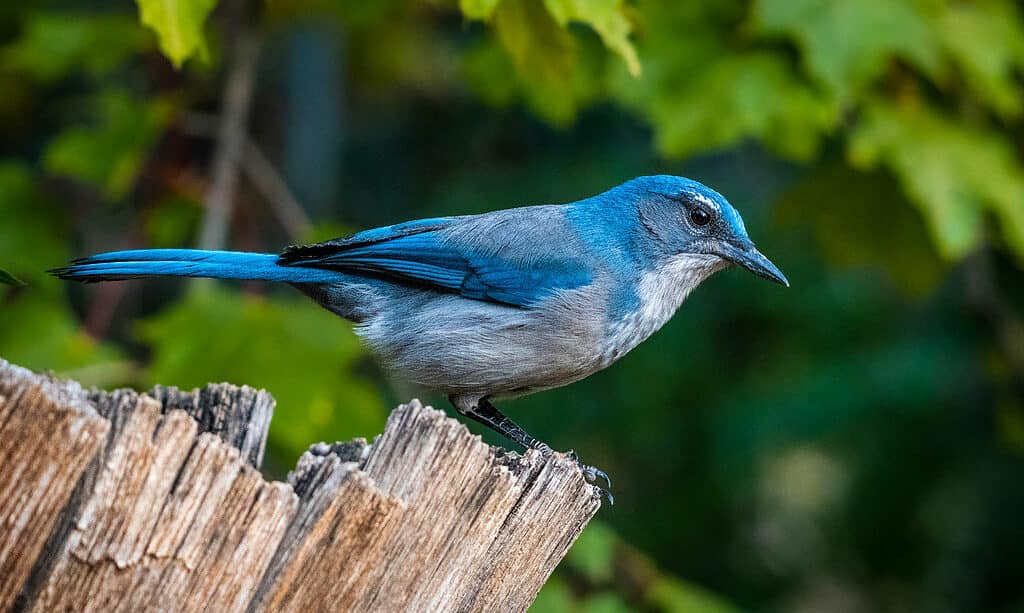
Woodhouse’s scrub-jays do not have the emotive crest that blue jays have.
©Eivor Kuchta/Shutterstock.com
Woodhouse’s scrub-jays are found mostly in the southern Rocky Mountains and share some territory with blue jays. However, Woodhouse’s scrub-jays do not have the emotive crest that blue jays are famous for, nor do they have the necklace marking. However, their coloring is similar in terms of placement on the body. To help tell them apart, look for a slightly darker shade of blue that is characteristic of the Woodhouse’s scrub jay. Blue jays also have some black markings on their faces, which Woodhouse’s scrub-jays lack.
7. Mexican Jay
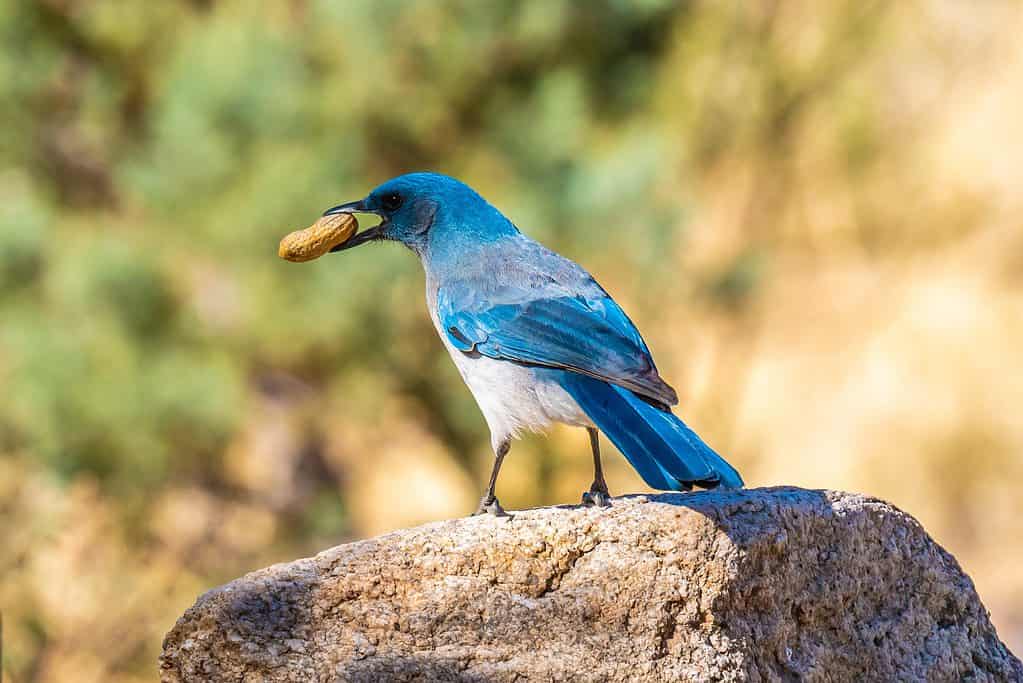
Mexican jays are similar to blue jays.
©Cheri Alguire/Shutterstock.com
This bird is found in Mexico and doesn’t share much space with blue jays. If you are seeing a jay in Mexico, it is most likely a Mexican jay. The coloring of the Mexican jay is very similar to the blue jay with blue on the back; however, their stomachs are grey instead of white. They easiest way to tell this bird apart from a blue jay is that the Mexican jay does not have a crest or black markings. Their feathers are also slightly iridescent!
8. Pinyon Jay
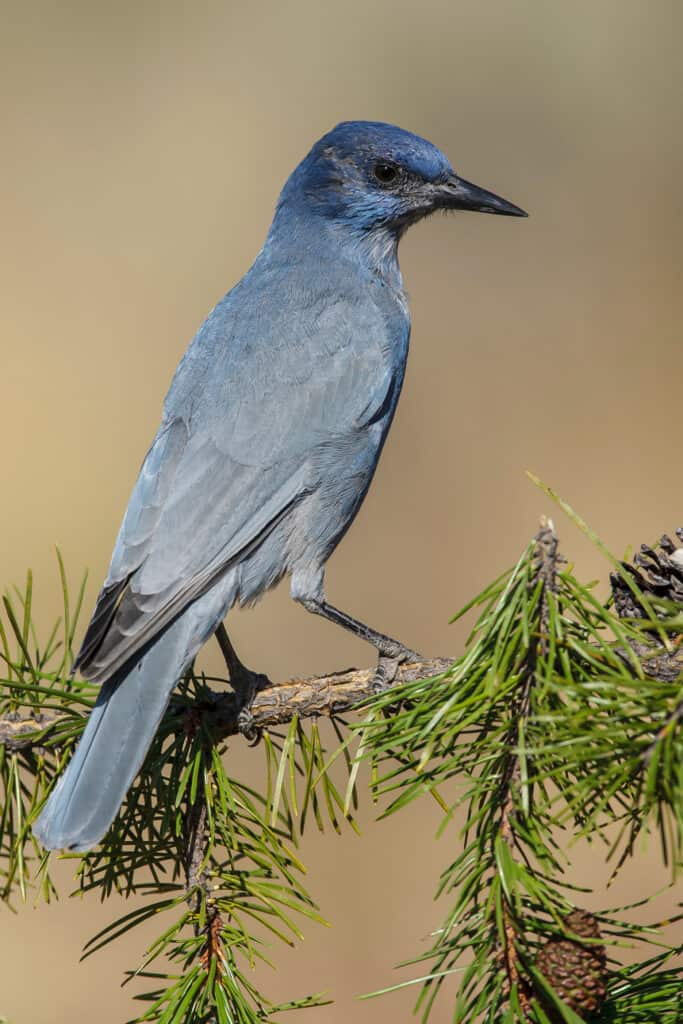
The pinyon jay doesn’t have black markings like the blue jay.
©Agami Photo Agency/Shutterstock.com
This bird is found mostly in the western United States and shares some range with the blue jay. Even though they have a similar body shape, they are pretty simple to tell apart. Pinyon jays have a fairly consistent dull blue/grey coloring all around their bodies, with deep ocean blue heads. They lack the color contrast of blue jays.
Summary of 8 Birds That Look Like Blue Jays
| Rank | Name | Location |
|---|---|---|
| 1 | Indigo Bunting | Eastern and Midwest United States |
| 2 | Mountain Bluebird | Western United States, Mexico, & Canada |
| 3 | California Scrub Jay | California |
| 4 | Florida Scrub Jay | Florida |
| 5 | Steller’s Jay | Western United States, Canada, & Mexico |
| 6 | Woodhouse’s Scrub Jay | Southwestern United States, & Mexico |
| 7 | Mexican Jay | Mexico |
| 8 | Pinyon Jay | Southwestern United States, & Baja California |
The post 8 Birds That Look Like Blue Jays (And How to Spot the Difference) appeared first on A-Z Animals.
September 16, 2025 at 05:02PMDayva Segal
.jpeg)
.jpeg)

0 Comments